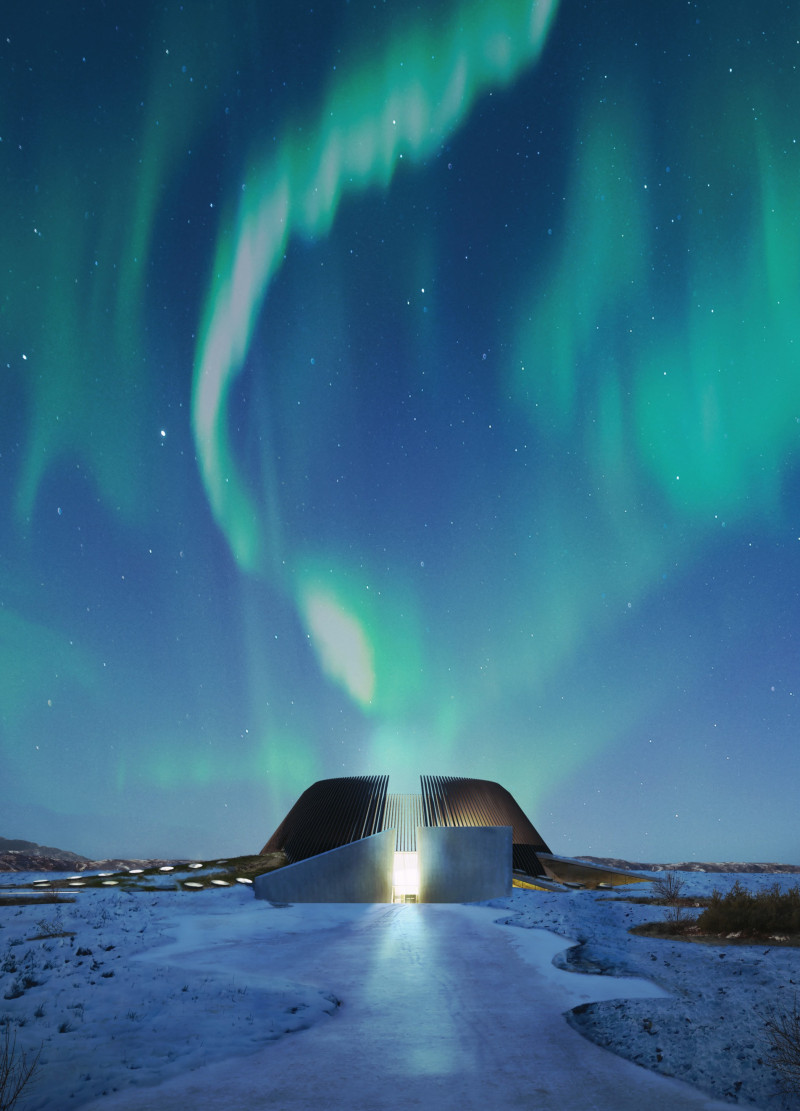5 key facts about this project
The Ice Pyre is located in the remote wilderness of Iceland, designed to connect with the surrounding landscape while serving as a center for cultural activities. Partially buried in the earth, the building has a unique shape that includes natural elements, making space for exhibitions, a café, and co-working areas. The design invites both indoor and outdoor experiences, fostering a relationship between the structure and its environment.
Structure and Form
The building’s form rises gently from the turf, with a structure that is partly underground. Wooden slats wrap around the building, acting as windbreakers while creating a distinctive outline that resembles the nearby Hverfjall mountain. This thoughtful design emphasizes the connection to the geological features of the site, offering protection from harsh weather conditions.
Spatial Organization
At the heart of the Ice Pyre is a central Plaza, which invites public interaction and artistic activities. This open area serves as a gathering point, leading visitors through interconnected spaces via a gently sloped ramp. The careful arrangement of rooms accommodates multiple functions, including exhibition areas, meeting spaces, and a café, adapting to the needs of the community and the change of seasons.
Material Considerations
Materials are chosen to complement the natural surroundings and ensure durability. The primary building material is molten rocks, which blend into the landscape. The upper part of the structure has a glass façade that lets in natural light, enhancing the feeling of openness inside. The green roof, made from the soil removed during construction, provides insulation and reinforces ecological values.
Sustainability and Energy Efficiency
Sustainability is a core feature of the Ice Pyre. It uses geothermal energy for heating, addressing the local climate while reducing environmental impact. By learning from nature and implementing passive solar techniques, the building creates a comfortable space for its users while promoting responsible architectural practices in a sensitive environment.
The design details are noticeable in the way light interacts with the façade. The arrangement of wooden slats creates patterns of light and shadow. Throughout the day, these patterns shift, allowing the building to change appearance, much like the landscape that surrounds it.





















































